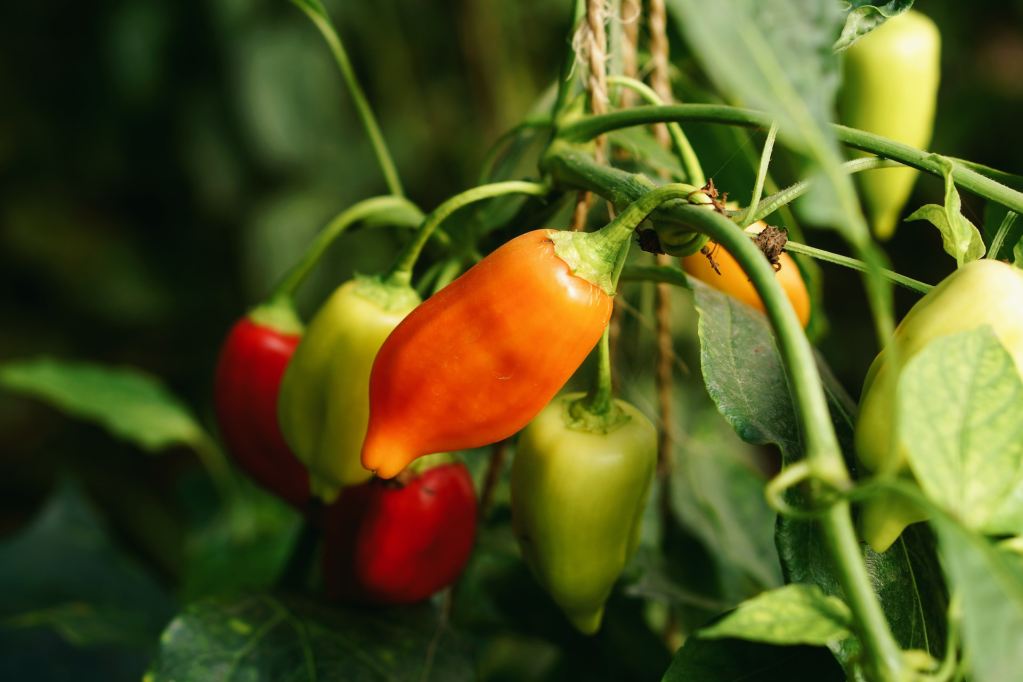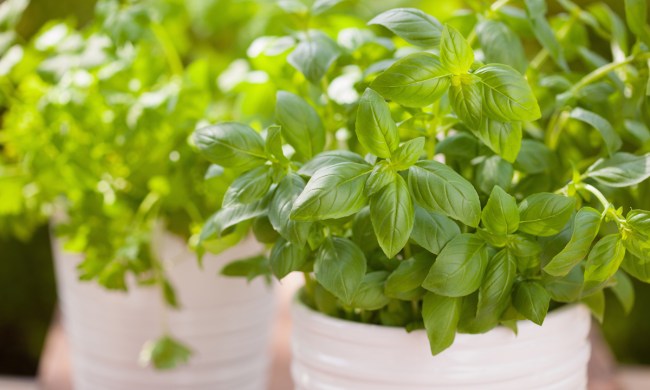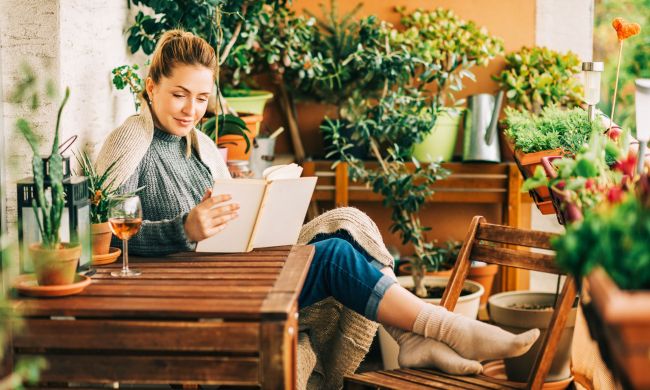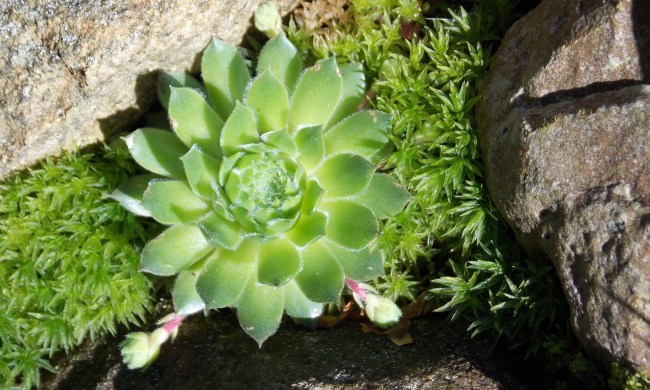Peppers are a delicious and nutritious fruit and vegetable, and it is a popular choice for many gardeners. When planning your garden, you may wonder what plants to plant next to your peppers. This guide to pepper companion plants has the answers. We’ll give you all the information you need to decide which plants to grow with your peppers and which to plant elsewhere.
No matter the kind of garden you’re looking to grow, one of these plants is sure to be a good fit. From fruits and veggies to herbs and flowers, this is the guide for you.

Fruits and vegetables for pepper companion plants
Peppers pair well with many other fruits and vegetables, both in meals and in gardens. Close relatives of peppers, such as tomatoes and eggplant, can grow as companion plants for peppers. When planning your garden, keep in mind that since they are related and are vulnerable to many of the same pests and diseases, you’ll need to keep a sharp eye out for signs of damage.
Small root vegetables, such as carrots, turnips, and beets, as well as bulbs like garlic and onions, can also grow as pepper companion plants. When planting them, remember that even smaller root vegetables can impede the roots of other plants. Make sure to space them far enough apart that they won’t damage each other.
Spinach, lettuce, and cucumbers are excellent pepper companion plants as well. Spinach and lettuce shade the roots but not the leaves of the plant. This slows water evaporation and keeps the sun from baking the soil around your pepper plant roots. Cucumbers don’t compete with peppers for resources and can grow alongside many of the same companion plants, but there is a slight issue. Cucumbers tend to grow on trellises, which can block the sun if you aren’t careful. If your pepper plants are only shaded during the hottest parts of the day, this can be a good thing and prevent leaf scorching. However, too much shade will slow your pepper plant’s growth.
Another option is legumes, such as beans and peas. These plants tend to stay fairly small, depending on the variety, and they add beneficial nutrients to the soil. The primary benefit is that these plants take nitrogen from the air and move it into the soil.
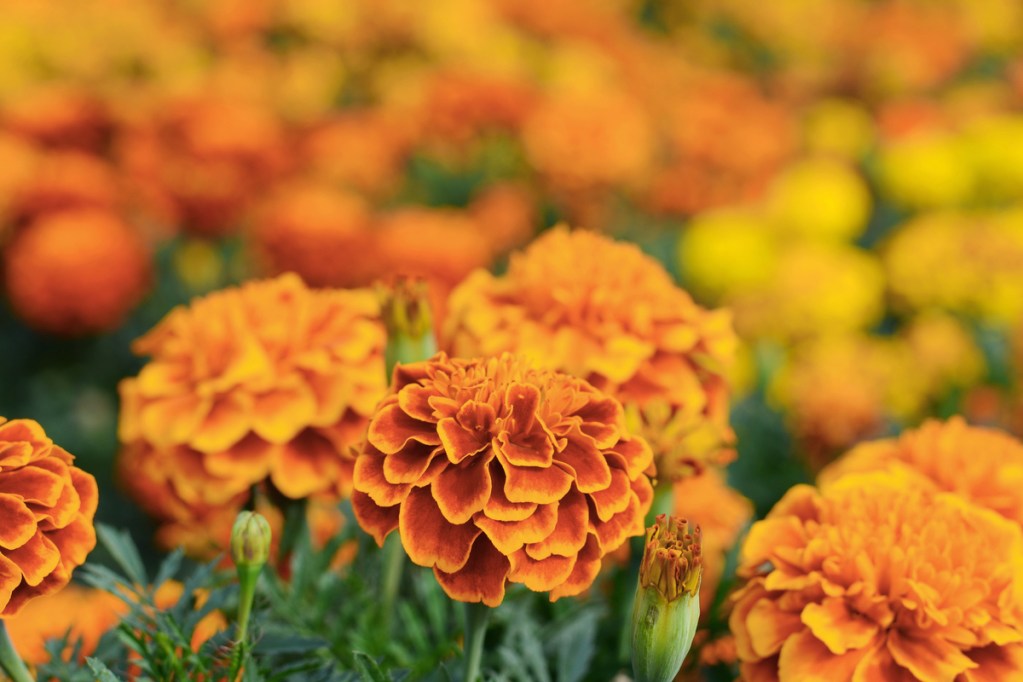
Flowers and herbs for pepper companion plants
Peppers can grow alongside several flowers and herbs, and while these combinations may not be as popular as the fruit and vegetable companion plants, flowers and herbs can offer a few unique benefits. They are typically highly attractive to pollinators, and some of them are believed to have natural pest repellent properties.
Marigolds and nasturtium are two pepper companion plants that are often chosen for being pollinator-friendly, pest-repelling, and edible options. Marigolds, in particular, are a favorite of ladybugs, which eat aphids. Aphids can cause quite a bit of damage in large numbers, so having ladybugs nearby is a good idea. Other flowers to consider are petunias, zinnias, sunflowers, coneflowers, and snapdragons.
Herbs will also attract pollinators and beneficial insects, while some pests are repelled or confused by their strong scent. Dill, in particular, is highly attractive to pollinators and ladybugs while keeping pests at bay, making it nearly as popular as marigolds as a pepper companion plant. Some other herbs to consider are basil, rosemary, oregano, marjoram, chives, and cilantro.

Plants to avoid growing with peppers
While peppers can grow with a wide variety of plants, not every plant will work well with them. Plants that are often targeted by the same pests increase the risk of attracting those pests. Blueberries, strawberries, and potatoes all fall into this category.
Brassicas should also not be planted alongside your peppers. This plant family includes broccoli, cauliflower, cabbage, kale, and Brussels sprouts. Brassicas are heavy feeders and need the same resources and nutrients that peppers do, so they will compete intensely when planted too close to each other.
Plants can also compete for space. Avoid planting large, sprawling, or spreading plants, such as melons or mint too close to peppers. While they may be able to grow together in harmony, oftentimes, the larger plants will begin to take over the space of the smaller pepper plants. If you do want to grow melons or squash with your peppers, choose a smaller variety and trellis them. Watch them carefully to ensure they don’t spread into your pepper plant’s space. Mint should be grown in a container, as its spread is difficult to control.
With this information, you can get started planning your next garden in a way that makes the best use of your space. Whether you choose to surround your peppers with marigolds to ward off pests or plant spinach and lettuce to protect your pepper plant’s roots, you’re sure to see success with these pepper companion plants. Just be sure to plant any brassicas, fennel, or sprawling vines on the other side of your garden.
